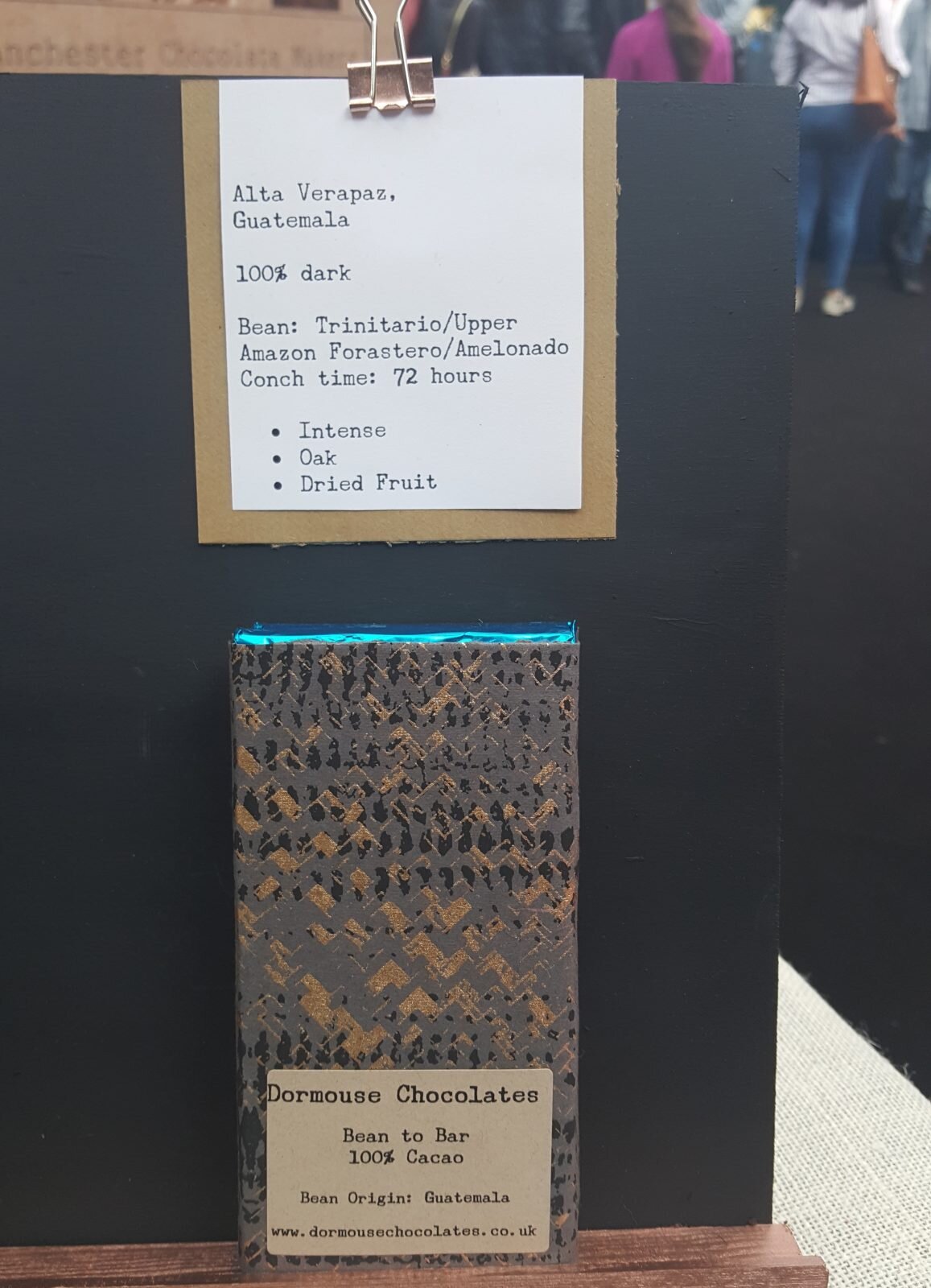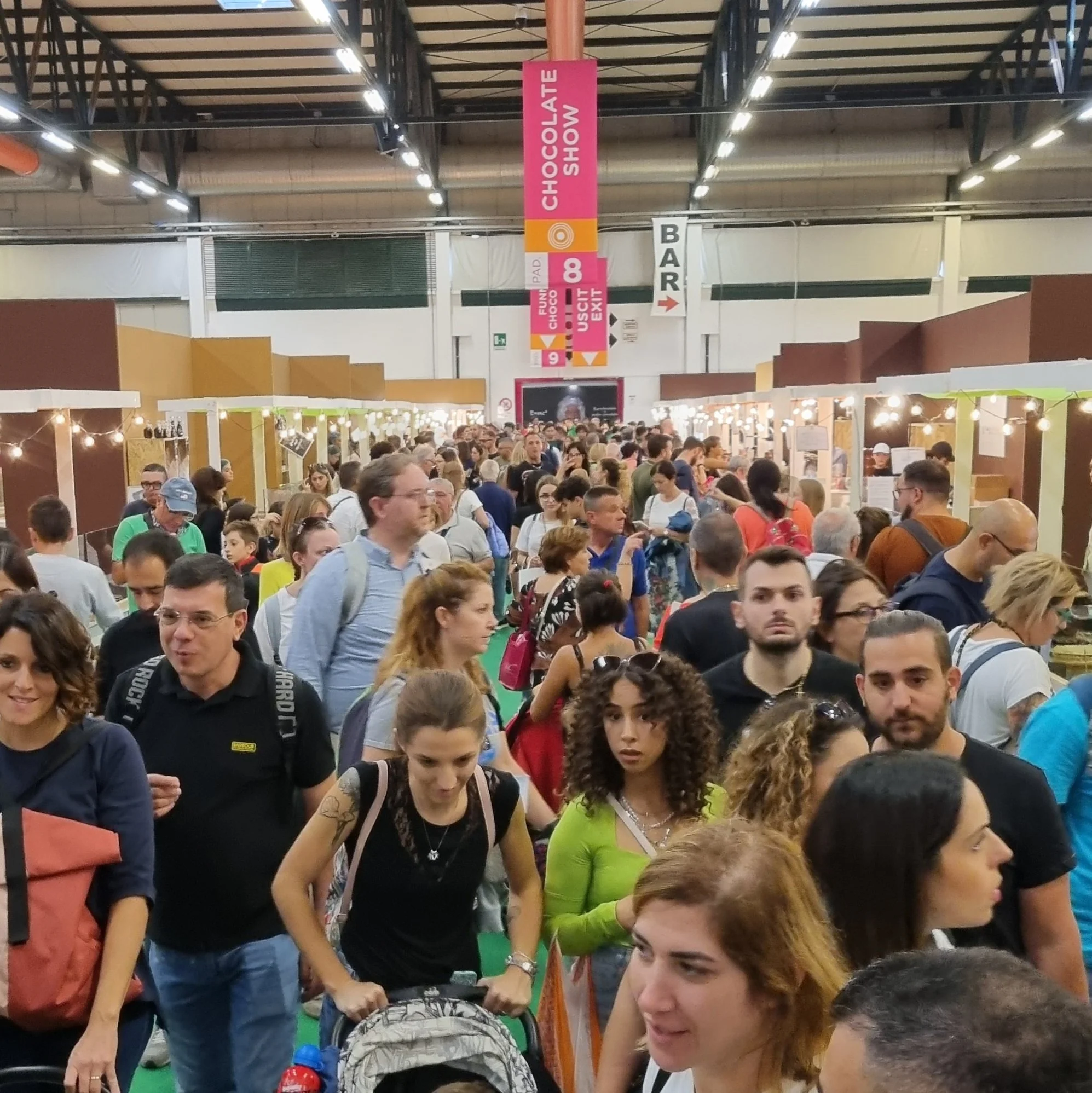The Chocolate Show In London Confirms New Trends For The Industry
October is a special month for London.
After the long summer break, the capital of England becomes the center of attention for every chocoholic in the world. For an entire week, the sweet Food of the Gods is glorified from all perspectives. Workshops, tastings, events, lessons, shows. Chocolate is everywhere, from special discounts at the supermarket to pop-up shops offering a fine selection. There is no escaping the sweet rush! Even those who "I don't care much for chocolate" are captivated by the joy of such celebration and dragged by their chocoholic friends to the best gatherings in town.
During this time, one of the events nobody wants to miss is The Chocolate Show, UK's largest event dedicated to chocolate.
On October 13-15, the Olympia Exhibition Center in Kensington, London hosted The Chocolate Show 2017. With 50+ chocolate companies on the exhibitors list, the event managed to offer a vast selection of the finest chocolatiers and pastry makers from the UK and around the world. Also celebrity chef demonstrations, chocolate workshops, sculptures, pop-up chocolate restaurants and professional tastings delighted the hungry attendees.
For regular consumers, this was a special occasion to indulge in delicious chocolate. From a professional point of view, The Chocolate Show was a great opportunity to discover the latest trends in the industry. What were chocolate companies offering? What were consumers asking for?
Let's have a look at the latest trends from London:
White Chocolate With Inclusions Becomes Incredibly Popular
This trend has been going on for one year now. Chocolate makers and chocolatiers take plain white chocolate and give it texture and flavor with all kinds of inclusions: raspberries, pistachios, cocoa nibs, matcha. Thanks to the use of high-quality ingredients, white chocolate is slowly but steadily transitioning from a cheap candy to a fine food to be savored just like dark chocolate.
Lacking the typical flavor of cocoa, white chocolate is often accused of not being chocolate at all. But this doesn't seem to concern consumers. White chocolate with inclusions was the first kind of chocolate to be sold out at The Chocolate Show in every booth. Even if plain white chocolate can be bland, boring and uninspiring, it can be turned into an intriguing delicacy with the addition of crunchiness (nuts, cocoa nibs) and flavors (spices, teas). Especially when it's made by small companies with artisanal methods, consumers trust the short ingredients list and the freshness of ingredients.
Consumers Are Educated And Prepared On Chocolate
All the efforts made in the past years to educate consumers on fine chocolate are finally giving results. Exhibitors at The Chocolate Show revealed that they had less explaining to do than they expected. Already familiar with terms like "bean-to-bar" and "single origin", regular consumers came prepared on the basics and ready to ask more challenging questions.
The level of education among consumers regarding chocolate is definitely increasing.
Conversations on cacao percentages and ingredients lists are officially over. Consumers are finally graduating from that elementary level of knowledge. Now they can name the major countries where cacao is grown, are familiar with the bean-to-bar process and can tell the difference between craft and industrial chocolate. This is the result of a jointed effort. On one side, consumers are more careful about the food they eat and love to conduct their own research. On the other side, the fine chocolate community worldwide has already spent a decade giving consumers all the knowledge to make conscious choices. Conversations with potential customers now focus on more advanced topics, from flavor to fermentation to the well-being of cacao farmers.
100% Cacao Bars Occupy A Prominent Position
The no-sugar trend has no intention to stop. Actually, it is only increasing in popularity. This could be easily told by the prominent position that 100% cacao bars were occupying at The Chocolate Show. If in the past years this kind of bar was kept in a corner, now it is proudly shown in the front row.
Because of this popular demand for sugar-free chocolate, every chocolate maker has a 100% cacao bar included in the assortment. But the standards have raised also for this kind of chocolate! Consumers expect it to be flavorful, with some interesting tasting notes that can distract from the lack of sugar. This is not chocolate "for punishment" anymore, but to be savored and enjoyed like any other dark chocolate.
Strong Need For A Community Of European Chocolate Makers
Chocolate makers in Europe look up to chocolate makers in the United States. Observing from afar, they often envy how on the other side of the world knowledge around craft chocolate spreads fast and wide. This happens thanks to an open community of American chocolate makers ready to help each other and share information. In Europe, this sense of community is still in development.
European chocolate makers don’t feel like they belong to a community.
European chocolate makers wish they had more opportunities to come together as a community. Some events like Origin Chocolate in Amsterdam are already in place to achieve this goal, but don't seem to be enough. In the US, professionals can meet at the Chocolate Makers Unconference in Seattle and at the Fine Chocolate Industry Association events in New York and San Francisco, just to name a few.
The attitude of the craft chocolate community in the US is also very different. So called "competitors" visit each other's chocolate factories, exchange opinions and often call up one another for help. They understand that choosing collaboration over competition means contributing to the well-being of the entire industry. In Europe, chocolate makers tend to be reluctant to the idea of opening the doors of their factories or sharing precious info with other companies, jeopardizing the creation of a real community.
Consumers Ask For Award-Winning Products
At the end of its first day, The Chocolate Show hosted the International Chocolate Awards ceremony that announced the winners of the World Final competition. The following day, every winner exhibiting at the show proudly put on display their awards. Most of those same products sold out within the day.
Peruvian maker Shattell wins Best In Competition GOLD for its Chuncho 70% chocolate bar.
The International Chocolate Awards have raised some criticism lately. Many believe that the awards handed are way too many, and that the tasting method isn't quite professional (for example, the panel tastes a lot of chocolate in one single day, running the risk to misjudge the last samples). However, it's undeniable that the system of the Awards works wonders to sell fine chocolate. Consumers looking for signs of quality are reassured by the stickers of the Awards appointed on chocolate products. These are like stamps of approval from professionals in the industry, giving the message that those same products are worth their price tag. At the same time, chocolate makers can sell more chocolate when they win awards. Seems like a win-win situation, right?
More Countries Of Origin Are Making Their Own Chocolate
Recognizing the finesse of the cacao grown in their own country, chocolate makers are inspired to make chocolate that celebrates their heritage. The most popular producers of fine cacao, like Peru and Ecuador, are already accustomed to this trend. But this new phenomenon is also taking place in unexpected countries, like Taiwan and the Caribbean.
Tired of giving away their precious cacao, farmers have started to see the potential of making their own chocolate for better profits. The path they follow is usually the same: they first produce small quantities of chocolate bars to sell to the local market, then they see how the chocolate performs, and in the case of positive feedback they think about exporting abroad. In other cases, regular chocolate makers who are passionate about the fine cacao grown in their own country turn it into fine flavored chocolate hoping for worldwide appreciation. Either it be tree-to-bar or bean-to-bar, the distance between the cacao tree and the finished product seems to be getting shorter in many places around the world.
The Chocolate Show in London has demonstrated that chocolate consumers are getting more educated, expecting high-flavor profiles from both dark and white chocolate, valuing the recognition from official institutions like the International Chocolate Awards. They are also ready to ask deeper questions and to hear the stories behind the chocolate.
What do you think about these trends from The Chocolate Show in London?

















